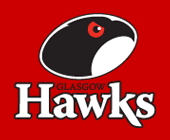|
The IRB Council has approved a change to the Law that governs the scrum. This follows a review of the scrum by the IRB Rugby Committee and its Law Project Group following recommendations made by the IRB’s Medical Committee. The Law change will see the implementation of a four stage “crouch, touch, pause, engage” sequence for the initial scrum engagement at all levels of the Game from January 1, 2007.
”An essential element of rugby is its physicality. This has to be appropriately balanced with the welfare of participating players and the IRB continues to take such issues very seriously. As the world’s governing body we review all aspects of the Game and where appropriate consult with relevant experts,” said IRB Chairman Dr Syd Millar.
“The IRB believes that the contested scrum is an integral part of the Game and that Rugby is unique in that its playing charter provides the opportunity for individuals of all shapes and sizes to play the Game. That said, we have taken expert medical and technical advice that indicates that it is now appropriate for the Game to adopt a less vigorous scrum engagement sequence,” added Dr Millar.
Although various aspects of the scrum were considered by the Law Project Group (LPG), two key areas were reviewed. The first was information from the IRB Medical Advisory Committee on the engagement, and the second was the biomechanical processes involved in the scrum.
Issues with the scrum were identified and a number of corrective measures were discussed. It became clear that the gap between the two teams at engagement needed to be better quantified to prevent practices such as charging and this has led to the Law change in the scrum.
Three recommendations of the LPG have been approved by Council:
1. The new Law to be applied for the scrum engagement will be: The referee will call “crouch” then “touch”. The front rows crouch and using their outside arm each prop touches the point of the opposing prop’s outside shoulder. The props then withdraw their arms. The referee will then call “pause”. Following a pause the referee will then call “engage”. The front rows may then engage. The “engage” call is not a command but an indication that the front rows may come together when ready. This is a change to Law 20.1(h). Presently law 20.1 (h) stipulates a “crouch, pause, engage” sequence.
2. The scrum must be stationary and the middle line of the scrum must be parallel to the goal lines. A team must not shove the scrum away from the mark before the ball is thrown in. This reinforces current Law 20.1(k).
3. The front rows must crouch so that when they meet, each player’s head and shoulders are no lower than their hips. This will ensure that both front rows are at as suitable horizontal height. This reinforces current Law 20.1(g).
The Law change will come into effect on January 1, 2007 with recommendations 2 and 3 coming into effect concurrently
“This new engagement sequence will standardise the distance the two sets of forwards are apart, reduce the collision at engagement and will assist in ensuring that both sets of forwards are at the best horizontal height possible. This is crucial to the successful engagement of the scrum,” said the world’s most capped front row forward, Englishman Jason Leonard who has assisted the Law Project Group in its review of the scrum.
“With the reduced impact and forwards at the correct height we will see an associated improvement in the bind. This should also assist in minimising collapsing of the front row. It also ensures that the scrum remains a true contest which is important for the Game. It in no way impairs both teams ability to contest for the ball,” added Leonard.
In light of the Law change the IRB Council has requested IRB management to review and further develop its educational and technical programmes for the scrum. This review will include consideration of the suitability of various Member Union initiatives such as coach and referee education programmes and other relevant policies. Council noted the recent success of policies adopted in Unions such as NZ and France around educational initiatives.
“We see comprehensive educational and technical training programmes, allied with sound research that seeks to increase understanding of the biomechanics and injury risks involved in the scrum as the way forward,” said New Zealand Rugby Union Manager of Research and Injury Prevention Ken Quarrie.
The IRB, in accordance with the newly adopted Injury Definition Protocol that is contained within a new IRB Medical Plan, is committed to further study of the biomechanics of the scrum, including the wheel, and the collation of data on all injuries in the Game. This Law change will also go hand in hand with the zero tolerance policy on crooked feeds to the scrum that will come into effect on January 1, 2007.
This article was posted on 2-Jan-2007, 09:47 by Hugh Barrow.
|






